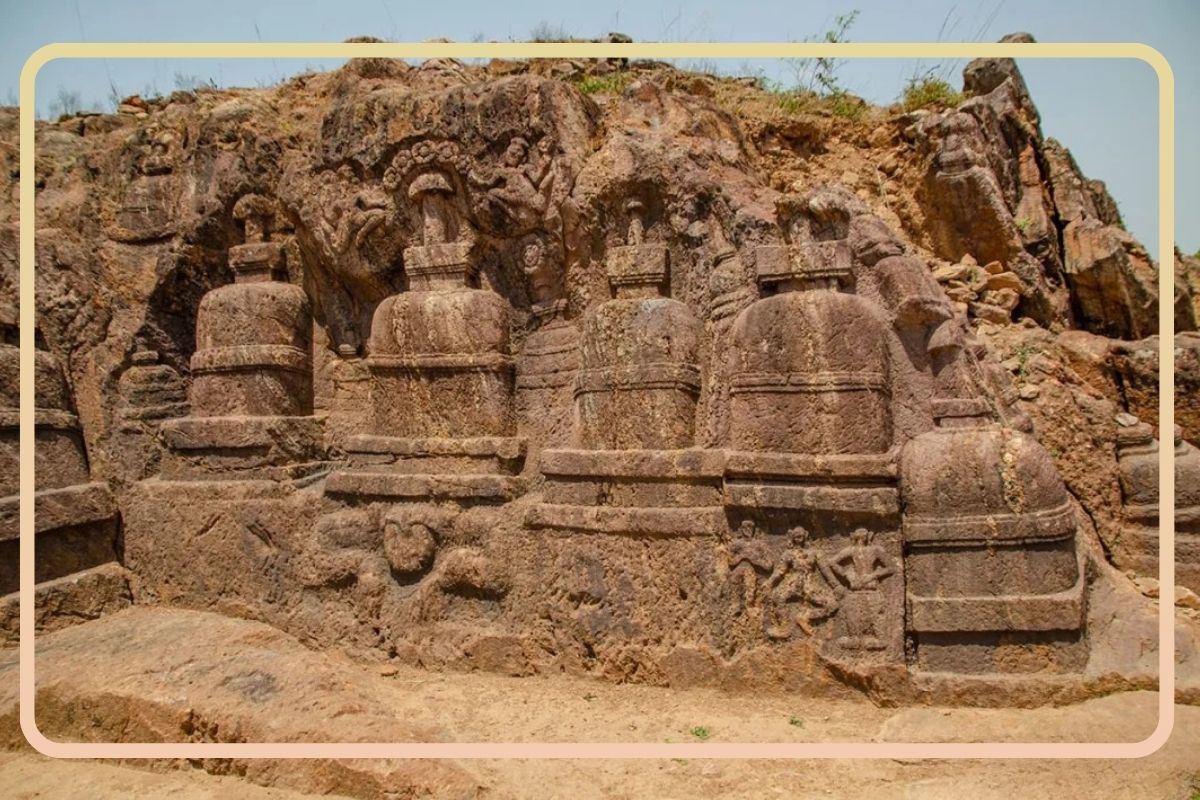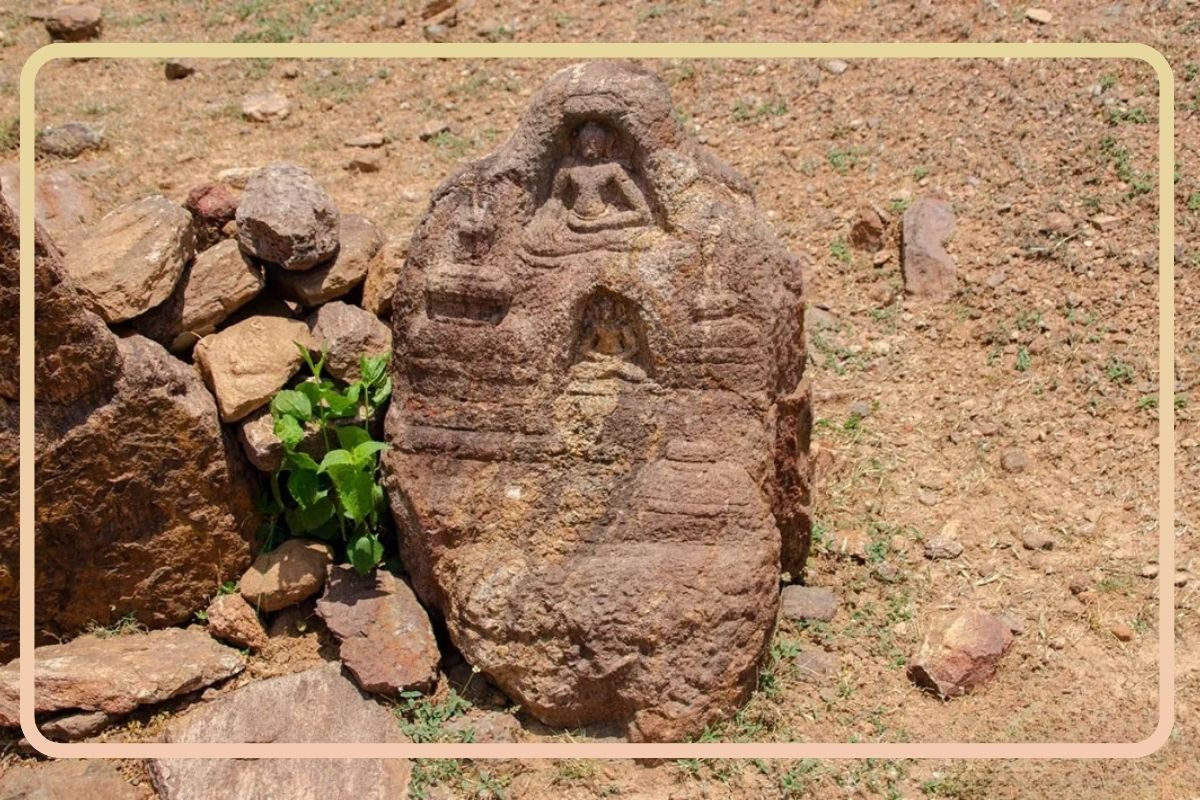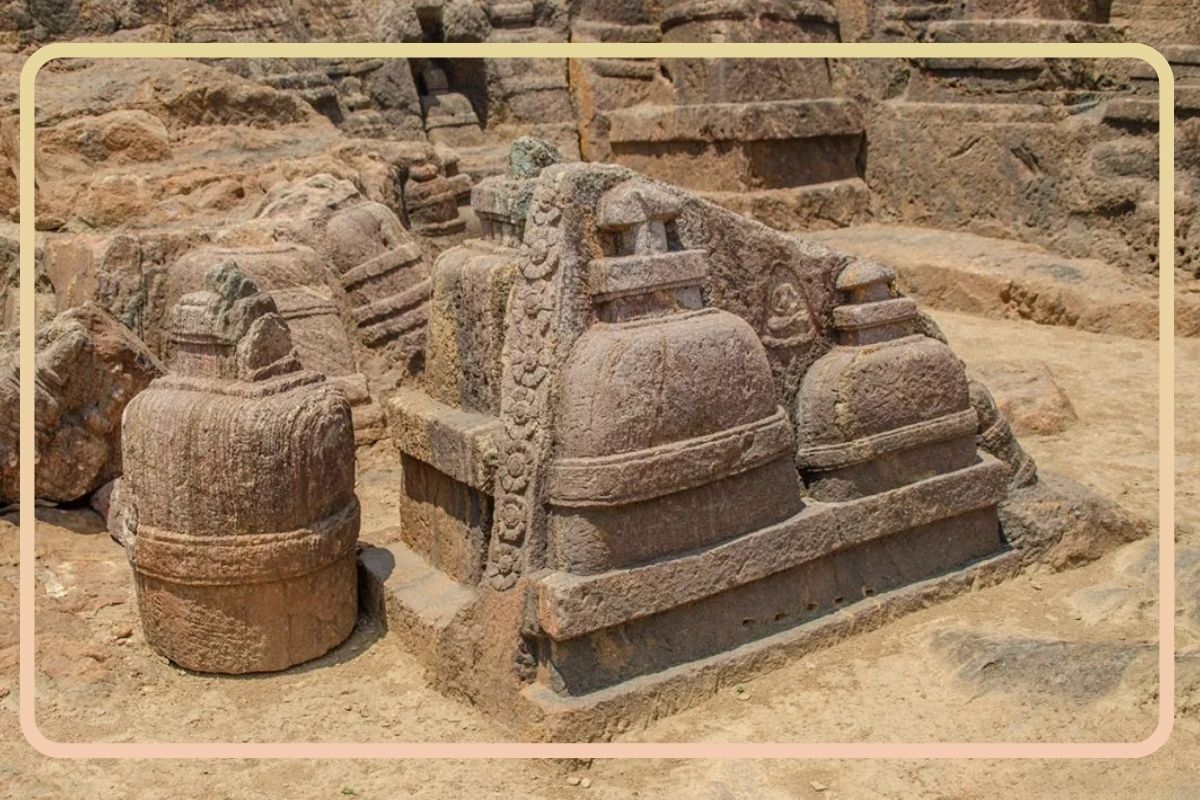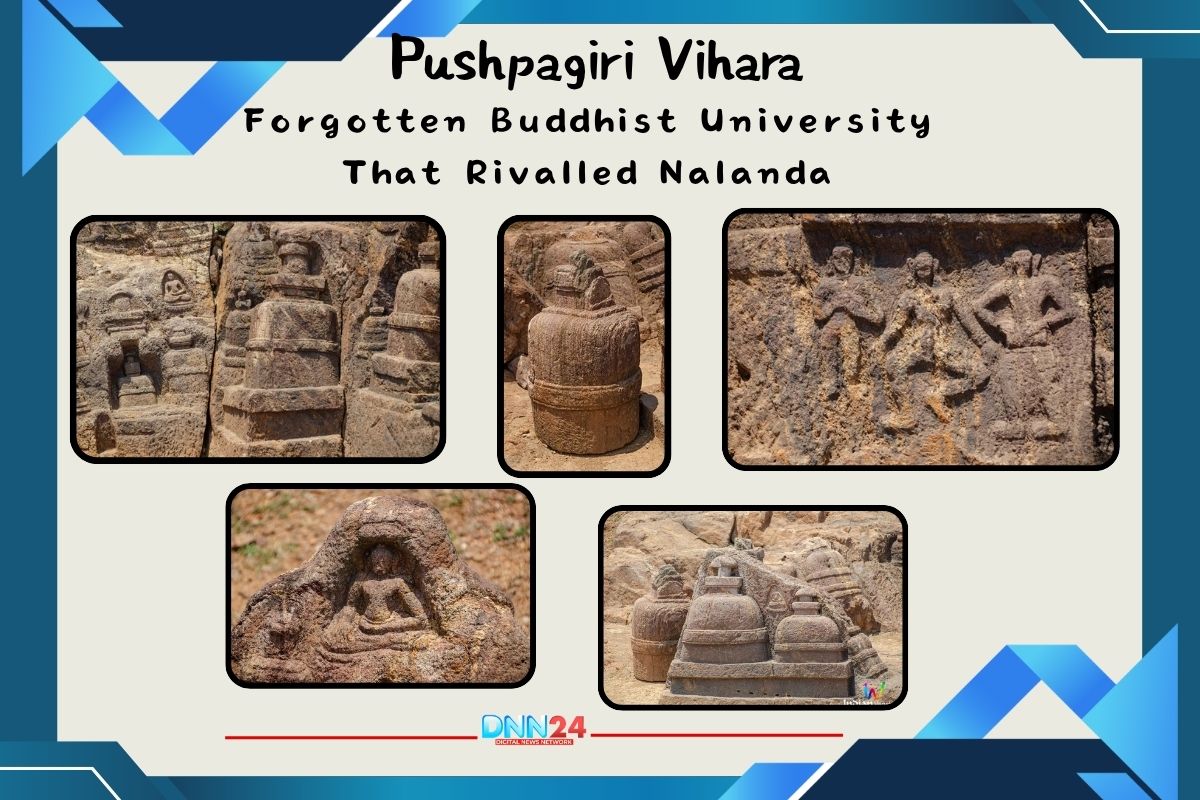Beneath Odisha’s Langudi Hill lies a forgotten Buddhist monastery that once matched the grandeur of Nalanda. Pushpagiri Vihara, buried for nearly a thousand years, is slowly revealing secrets that could rewrite the history of ancient India.
Pushpagiri Vihara: The Flower Hill That Ashoka Built
Pushpagiri means “hill of flowers,” and the name captures the beauty of this remote site in ancient Kalinga. During the 3rd century CE, Emperor Ashoka planted Buddhism across his empire. Recent archaeological discoveries, including inscriptions in Brahmi script, connect this monastery directly to Ashoka’s vision.

One inscription mentions “the prominent stupa of the accumulated height of Ashoka,” confirming what historians suspected for decades. The site contains 34 rock-cut stupas scattered across the hillside, each carved with devotion by monks and artisans who understood their work would outlast empires.
These structures stand today, weathered yet dignified, holding stories in their stone. The Chinese traveller Xuanzang visited Pushpagiri in the 7th century and documented its importance. He placed it alongside Nalanda and Vikramashila as a great centre of learning, a “mahavihara” where knowledge flowed freely. Pushpagiri was not isolated.

It functioned as an intellectual hub, drawing students from distant lands who travelled treacherous routes seeking enlightenment. The monastery thrived for centuries, its influence extending across Southeast Asia. Today, visitors walk among ruins that once housed brilliant minds, feeling the weight of time and wisdom in every crumbling brick.
Pushpagiri Vihara: When Monks Debated Philosophy Under Ancient Skies
Between the 3rd and 11th centuries, Pushpagiri flourished as a centre of Buddhist thought. Monks arrived from India, Tibet, China, and Southeast Asia, carrying questions about existence, logic, and compassion. The monastery offered rigorous training in Buddhist philosophy, and debates echoed through its halls on a daily basis. Students studied palm-leaf manuscripts, memorised sutras, and contributed to the artistic heritage visible today.
The site preserves stunning sculptures of the Dhyani Buddhas, Avalokiteshvara, Tara, and Prajnaparamita, each figure carved with precision and reverence. These stone guardians still watch over the ruins, their expressions serene despite centuries of exposure to the elements.

Archaeological excavations have uncovered terracotta seals, inscribed bricks, and fragments of Northern Black Polished Ware pottery. Each artefact tells part of a larger story about daily life in this ancient university. Pushpagiri matched Nalanda in reputation, attracting scholars who shaped Buddhist thought across Asia. The monastery produced texts, trained teachers, and influenced the cultural landscape of eastern India.
Its impact reached the Ganga delta and beyond, touching communities that adopted Buddhist values of peace and rational inquiry. The education offered here was comprehensive, encompassing logic, ethics, meditation, and the arts. Walking through the excavated areas today, you sense the presence of those ancient scholars in the layout of rooms and the placement of stupas.
Pushpagiri Vihara: A Millennium of Silence Broken by Shovels
Medieval India experienced the gradual decline of Buddhism. Pushpagiri, once vibrant with activity, fell silent as monasteries closed and monks dispersed. Jungle reclaimed the hillside, and soil buried the structures. For nearly a thousand years, Pushpagiri existed only in scattered references and local legends.

Villagers grazed cattle among the ruins, unaware they walked through history. In the late 20th century, archaeologists began systematic excavations. Each layer of earth removed revealed more of the monastery’s grandeur. A massive stupa emerged, along with pillars, rock-cut sculptures, and inscribed artefacts. The discoveries confirmed historical texts and revealed new information about Ashoka’s patronage.
The Archaeological Survey of India now protects the site, though much remains buried. Experts estimate that only a fraction of Langudi Hill has been excavated. More stupas, sculptures, and possibly manuscripts may still lie beneath the surface, waiting to be discovered by future archaeologists. Local communities have become the custodians of this heritage, guiding visitors and sharing oral histories that have been passed down through generations.

The excavation process continues at a slow pace, striking a balance between preservation and discovery. Each season brings new findings, and each artefact adds detail to our understanding of ancient Buddhist education. Pushpagiri’s rediscovery reminds us that history endures, even when it is buried, and that patience rewards those who seek knowledge.
Pushpagiri Vihara: Why This Ancient Monastery Matters Today
Pushpagiri offers modern India a connection to its Buddhist past. The site demonstrates that Odisha was not merely a coastal kingdom but a centre of intellectual achievement. In an era dominated by rapid information and surface learning, Pushpagiri embodies deep study and contemplative practice.
The monastery attracts historians, spiritual seekers, and travellers weary of crowded tourist circuits. Unlike famous sites, Pushpagiri remains relatively undiscovered, preserving an atmosphere of quiet reflection. Visitors wander freely among ruins, touching stones that monks touched centuries ago. The site complements the Buddhist triangle of Lalitgiri, Ratnagiri, and Udayagiri, forming a broader picture of Buddhism’s influence in eastern India.

Local communities benefit from increased interest in their heritage, and cultural tourism brings economic opportunities while promoting the preservation of their cultural heritage. Pushpagiri’s ongoing excavation holds potential for significant discoveries. Future findings could reshape our understanding of how knowledge networks functioned in ancient Asia.
The monastery connected India with distant lands, facilitating cultural exchange long before modern globalisation. Its ruins challenge us to value education, peace, and rational inquiry in our own time. Standing on Langudi Hill, surrounded by broken stupas and scattered bricks, you feel the continuity of human aspiration across centuries. Pushpagiri teaches patience, reverence, and the understanding that some wisdom cannot be rushed.
Pushpagiri Vihara stands incomplete, its story still unfolding with each excavation. The flower-covered hill keeps its secrets close, inviting those curious enough to climb its slopes and patient enough to listen to whispers carried on the wind.
Also Read: Tomb of Sher Shah Suri: An Emperor’s Dream Palace Floating On Water
You can connect with DNN24 on Facebook, Twitter, and Instagram and subscribe to our YouTube channel.

